The Signer’s Mark: Signatures of the Unlettered — Part I
Middle Ages Through the Seventeenth Century
When thinking of autographs, the first thing to come to mind is famous signatures—John Hancock, Babe Ruth, Walt Disney, etc. Inscribed names with looping letters and distinct characteristics, but what if someone did not have the ability to sign their name, and how does one ensure that it wasn’t a forgery? Below, Marco Tomaschett, Swann’s autograph specialist, explores these questions and takes us through signatures of the unlettered throughout history in a two-part series beginning with Europe in the Middle Ages.
Seals, Monograms & Stencils
Before industrialization brought widespread literacy in the nineteenth century, the business of ensuring the legitimacy of important statements or agreements was entrusted to literate specialists. The scribe maintained public and legal records among the ancient Egyptians, and public notaries provided that service in the Roman Empire. Securing the authenticity of a document required that such specialists witness the employment of signet rings or other seals pressed into wax or clay, and it was they who also protected the integrity of the document with its associated seals. For much of history, the most powerful and most esteemed members of society were able to realize their intentions without the ability to write them out.
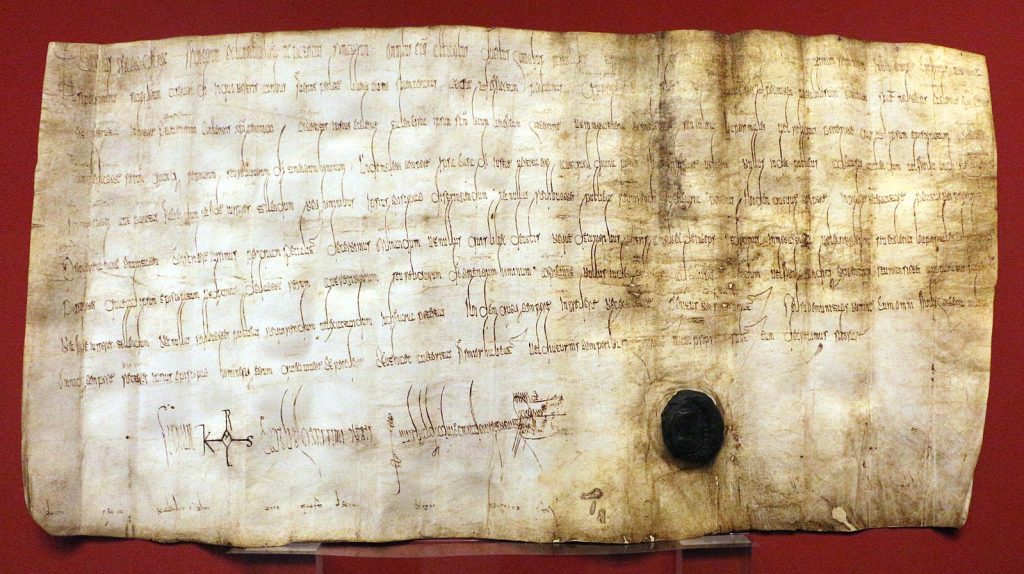
Until the modern period, the seal on a document was considered to be one of the best sources of evidence of its authenticity, but there are a number of examples of the use of the handwritten sign—or sign-manual—for similar purposes. During the Middle Ages among the Franks, documents were signed by monarchs and others using a signum manus: a monogram, usually in the shape of a cross, incorporating letters or other shapes. Charlemagne (747-814), for instance, signed charters and other documents by drawing the signum manus that incorporated the letters of his name, “Karolus”—though it is likely that only the beams of the cross and the design at the center was by Charlemagne; the letters at the extremes of the cross were probably written by a secretary. Despite being a proponent for education in his court and throughout his kingdom, Charlemagne was himself illiterate, not only in Greek and Latin, but also in his native German.
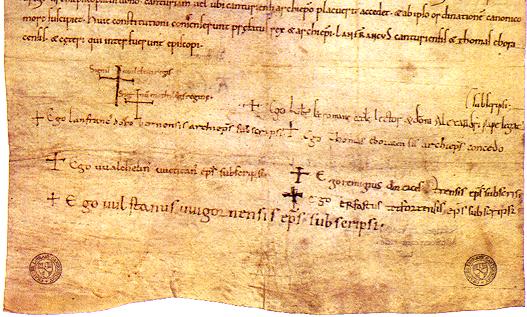
Centuries before Charlemagne, the Gothic king Theodoric the Great (454-526) was presumably so ashamed of being unable to form his Roman or Greek letters that he signed documents by painting or tracing a stencil, which was made for him by cutting the first few characters of his name out of a metal plate. Even simpler than the monograms of Charlemagne and Theodoric, and employed much later, the sign-manual of the unlettered William the Conqueror (1028-1087) was a mostly unadorned cross, formed with a few forceful strokes of a quill.
Paraphs
Similar to these are the signs-manual employed in Europe primarily between the ninth and eleventh centuries, called by the French parafe or ruche, consisting of an intricate design, usually not representing particular letters, often executed without lifting the quill from the page. Evolved from a decorative flourish that was added to the end of deeds during the Middle Ages, the parafe came to represent the official mark or signature of notaries, scribes, and other officials.
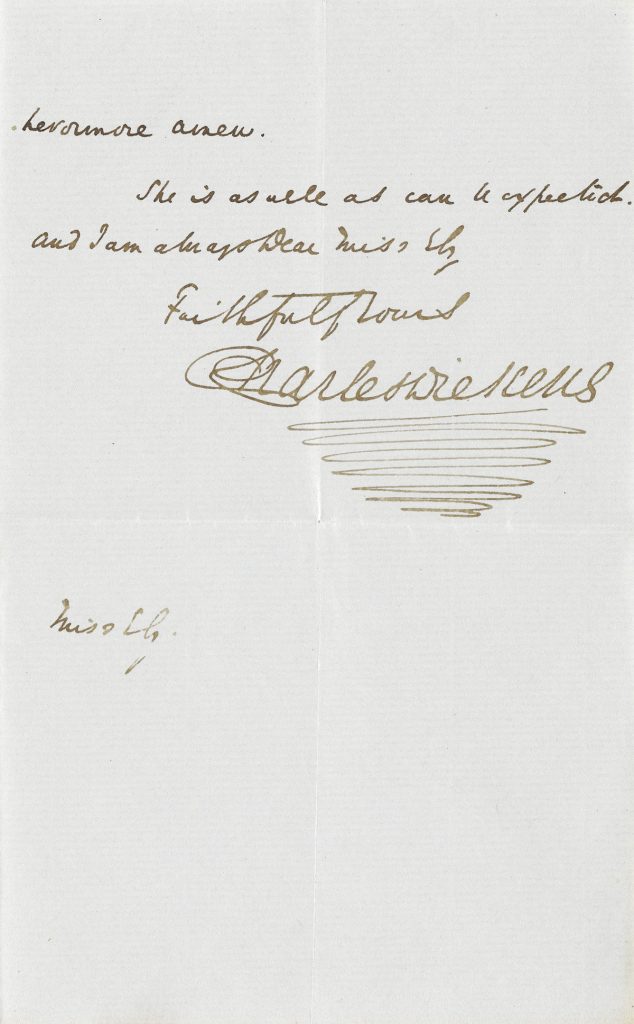
Left: Signature with paraph by Charles Dickens, 1843. Sold October 2019 for $9,375.
Today, “paraph” usually refers to a design that embellishes or supplements a signature, such as the design that is famously incorporated into the signature of one of the most literate figures of the last millennia, Charles Dickens.
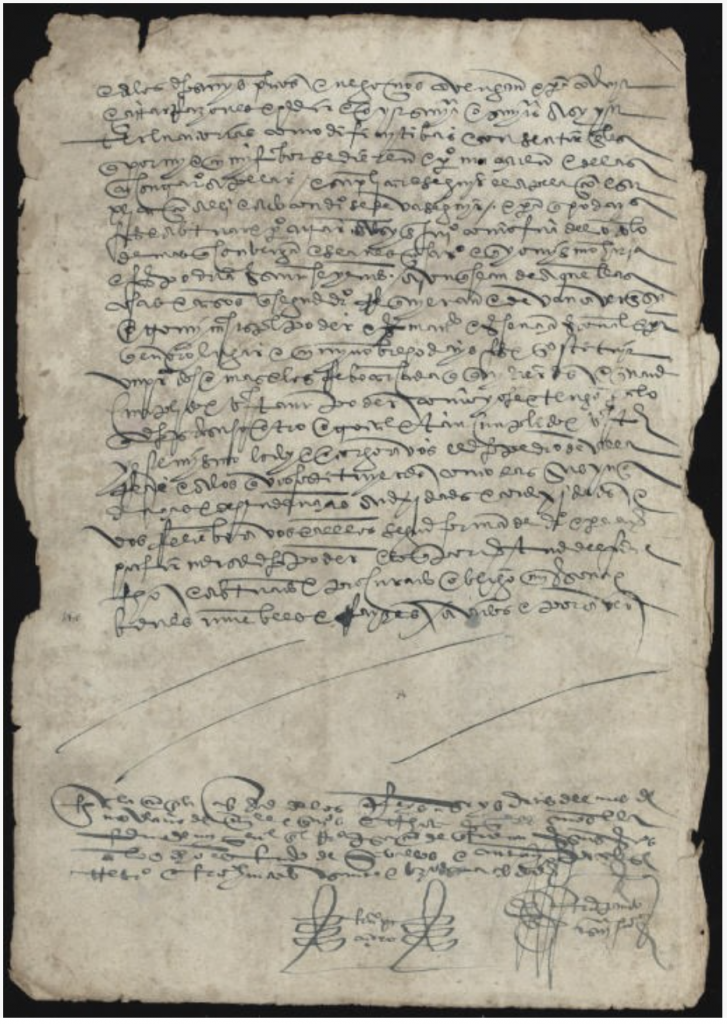
Right: Signature by Francisco Pizarro on a document, 1536.
The paraph used as a signature—rather than merely an embellishment—was employed not only by literate officials but also monarchs and others, some of whom were illiterate. When used in this sense by the Spanish or Portuguese, the paraph is sometimes called a “rubric.” An example is the signature of the illiterate Conquistador Francisco Pizarro (1475-1541), who sometimes signed by drawing the same design twice, leaving it to a secretary to write in between them the name he could not write himself.
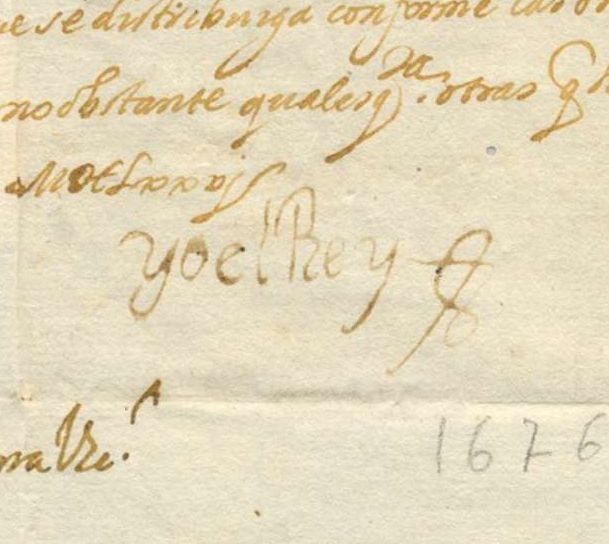
The signs-manual of certain Spanish monarchs between the fifteenth and eighteenth centuries often consisted of two similar paraphs with the words “Yo, el Rey [I, the King]” or “Yo, la Reyna [I, the Queen]” written between them. Some of these monarchs may have considered their time too precious to be bothered to write out this kind of elaborate sign-manual, drawing instead only a single paraph rather than two, or some even declining to write anything and choosing to use an inked wooden stamp to sign documents. Charles II of Spain (1661-1700) employed such a stamp, but he mainly did so because he could not write.
In 1677, the Parliament of England passed An Act for the prevention of Frauds and Perjuryes, requiring that certain types of agreement be committed to writing and signed by the interested parties in order for those agreements to be enforceable. The civil codes in much of the world have since incorporated this requirement, often referred to as the “statue of frauds.” Just as in earlier times, part of the job of legitimizing agreements fell to the literate witnesses who were among the signers. To accommodate the illiterate parties to such agreements, the definitions in the civil codes of what counts as a valid signature have been broad enough to include almost any symbol that expresses approval of the written contract. In part two, we explore the way people sign documents using symbols as their signed name.
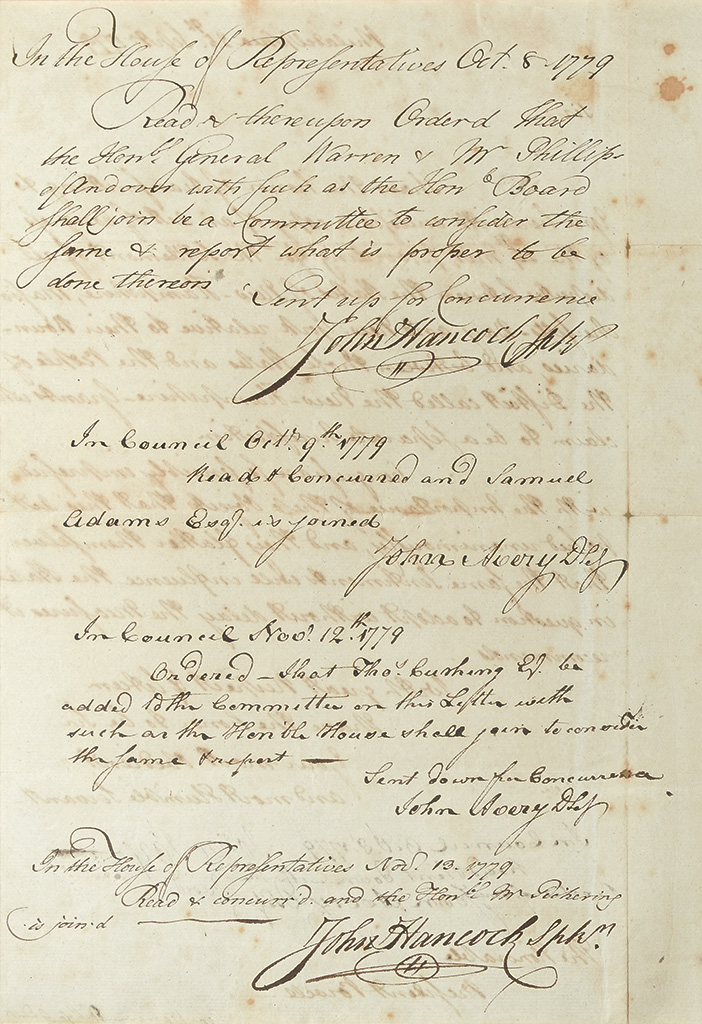
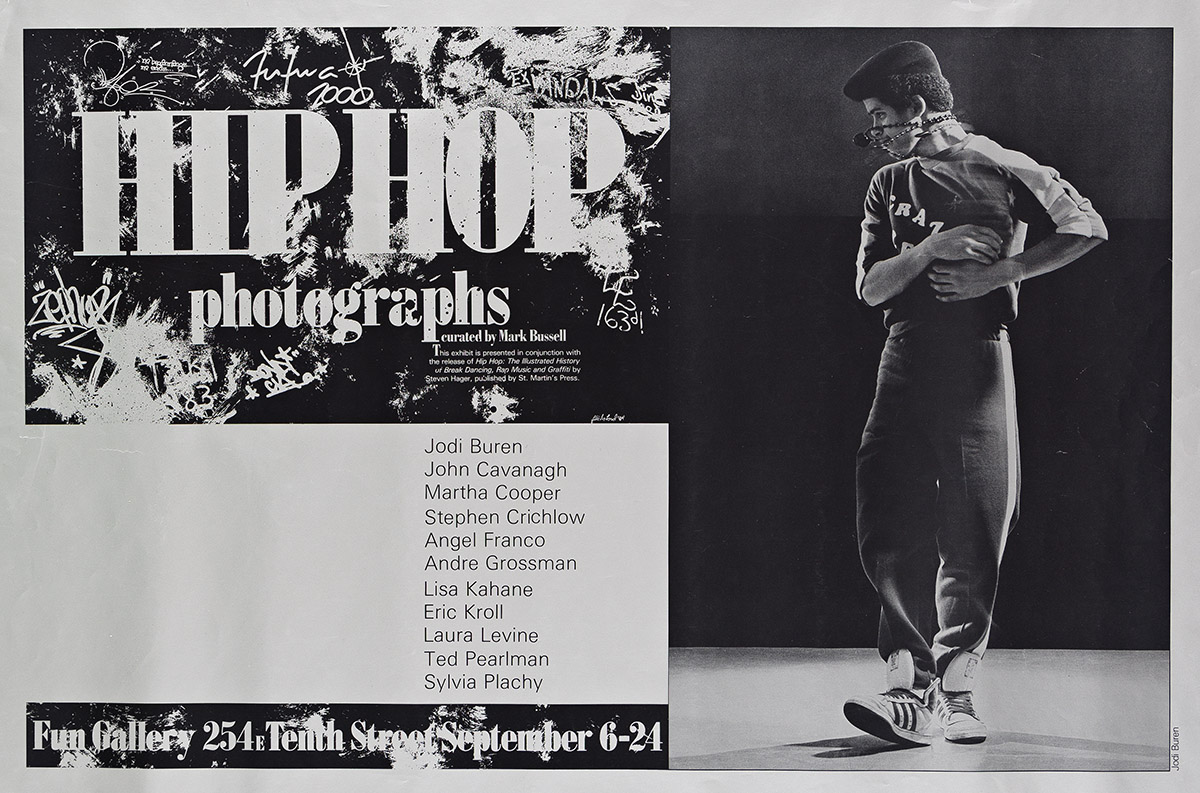
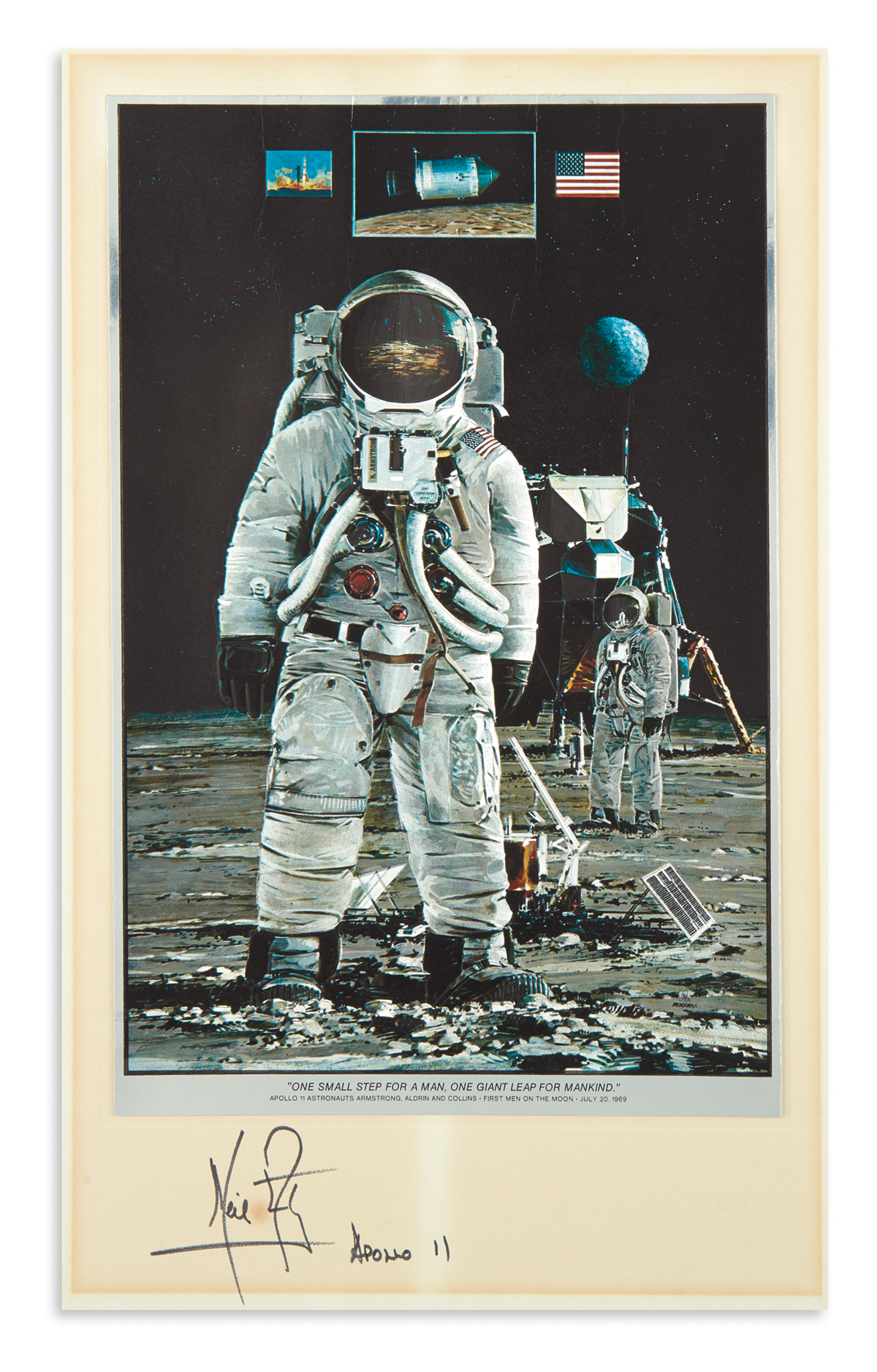








![Grace Meschery-McCormack shares about two copies of Fernando de Rojas’s ‘La Célestine,’ including a limited edition copy illustrated by Pablo Picasso.
At auction April 22. Learn more about the works at the link in our bio.
#Rarebooks #rarebookdealer #antiquarianbooks #auctions
_______________________________________
Music Credit:
Schubert - Piano Quintet in A major ‘The Trout’, D. 667 - IV. Andantino – Allegretto
Music provided by Classical Music Copyright Free on Youtube [https://tinyurl.com/visit-cmcf]
Watch: • Schubert - Piano Quintet in A major ‘...]](https://scontent-iad3-1.cdninstagram.com/v/t51.75761-15/491443494_18499096345036585_5935932878956098058_n.jpg?stp=dst-jpg_e35_tt6&_nc_cat=107&ccb=1-7&_nc_sid=18de74&_nc_ohc=PkkgV2ztsQIQ7kNvwEDCz0Y&_nc_oc=Adl3b2Joa3oMYe0KOe2BxPzZCRTEJIkNg76WoIsk3T2zNdnQ9wTCP8aaOTLCx9PcHBA&_nc_zt=23&_nc_ht=scontent-iad3-1.cdninstagram.com&edm=AM6HXa8EAAAA&_nc_gid=4GrbEKeO7xzg27qcgkSu2w&oh=00_AfHzFJGRX8Z2s607NGnqlBiLpijoLbHTKuejVPtCawdKKg&oe=6813A691)






